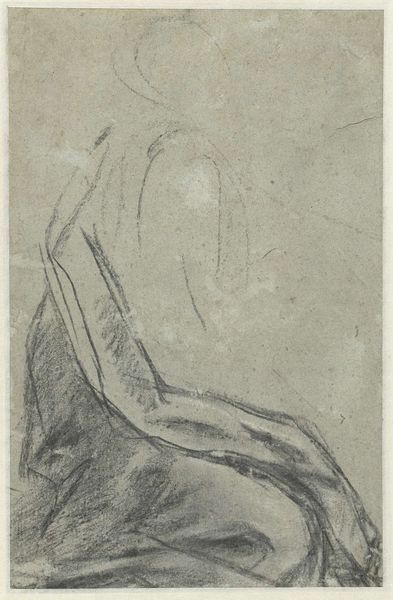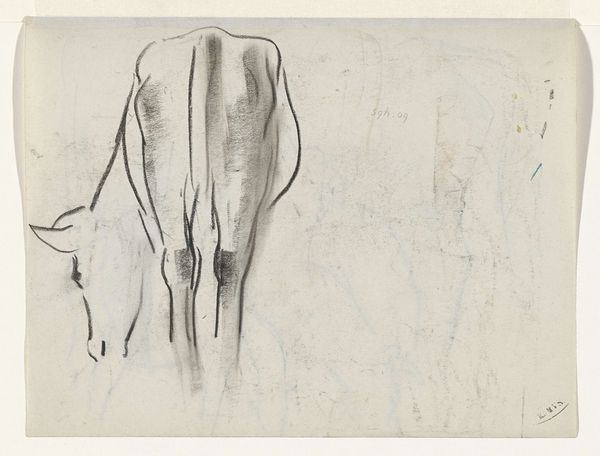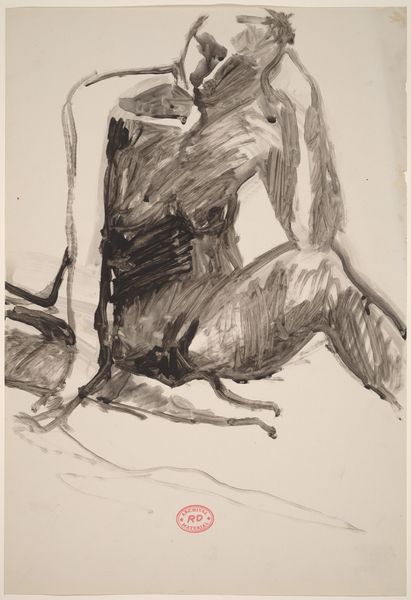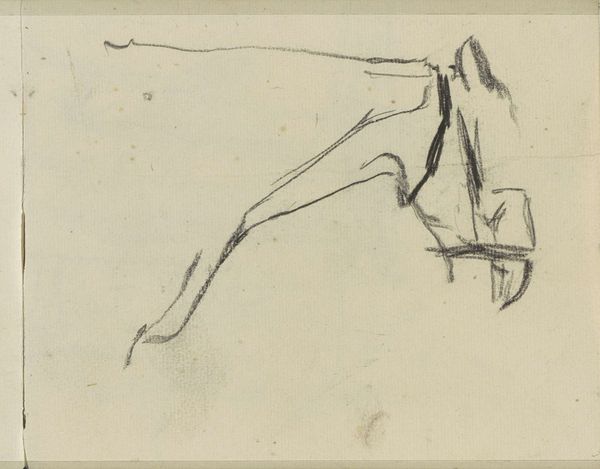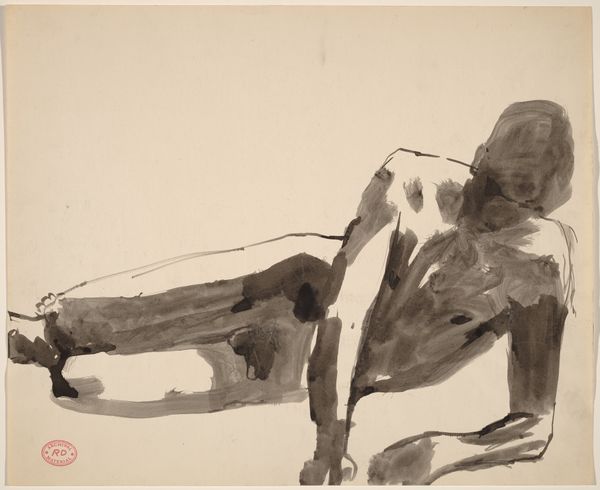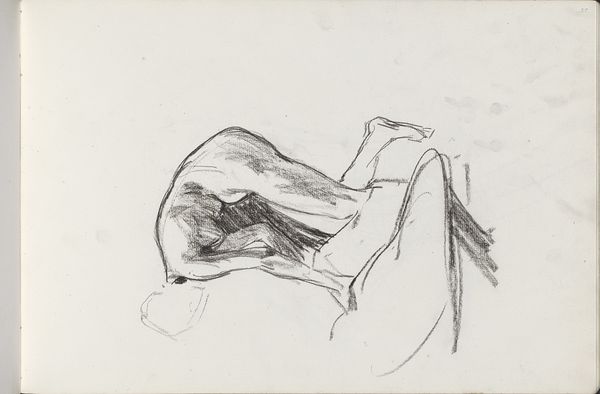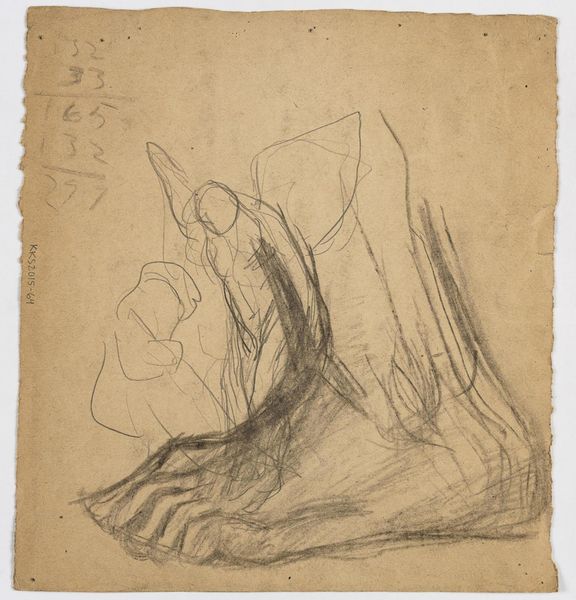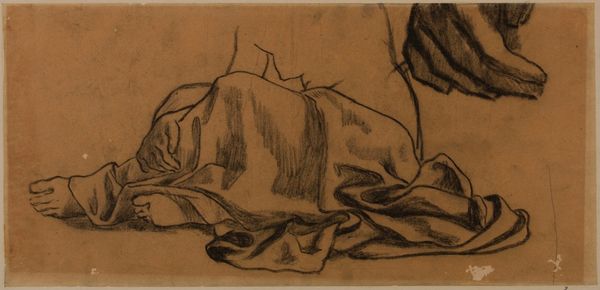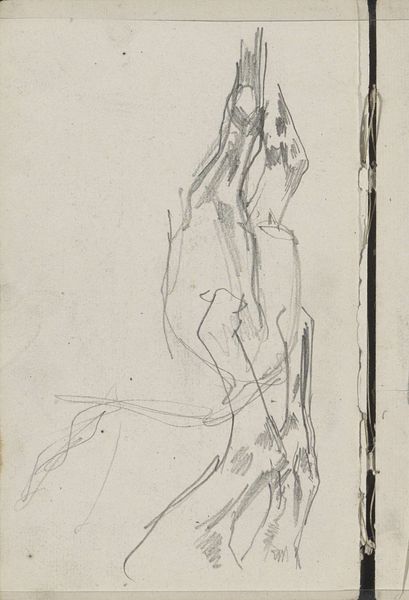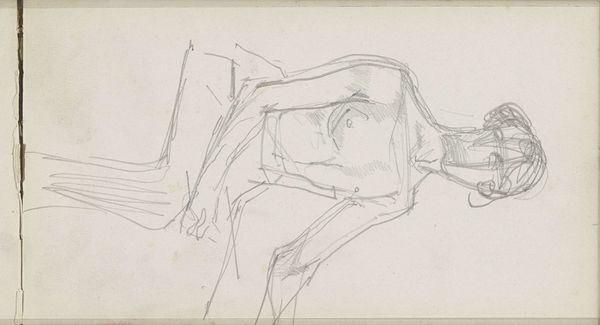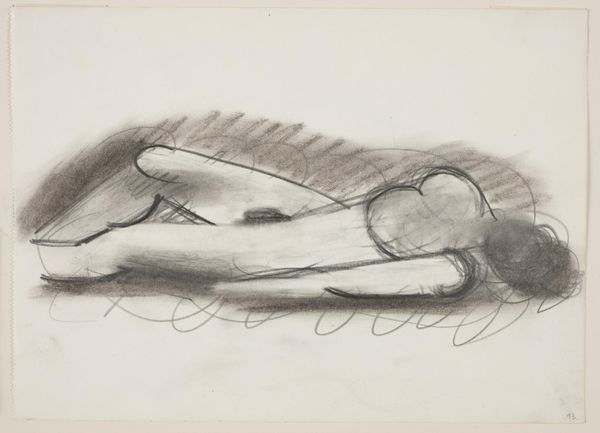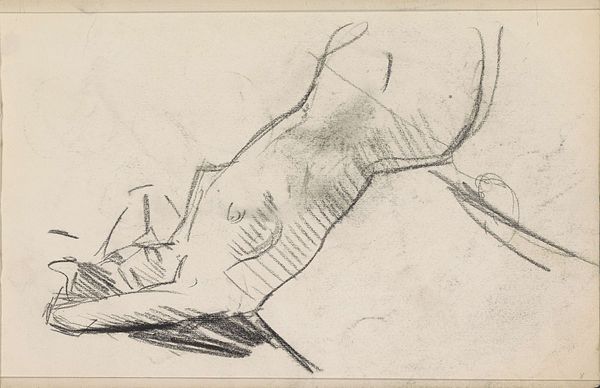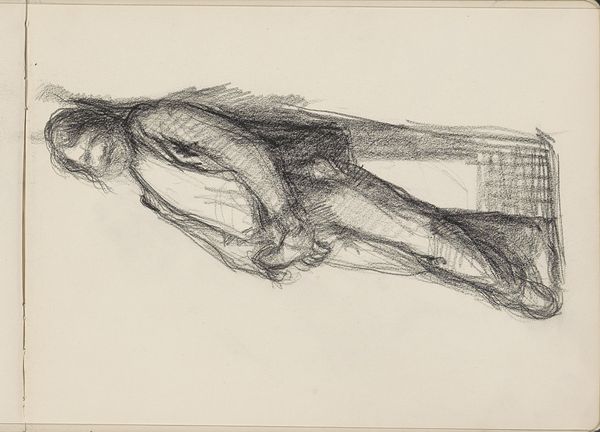
drawing, pencil, charcoal
#
drawing
#
charcoal drawing
#
form
#
pencil drawing
#
pencil
#
line
#
charcoal
#
academic-art
Dimensions: height 157 mm, width 203 mm
Copyright: Rijks Museum: Open Domain
Curator: Well, let’s begin by looking at this intriguing drawing entitled "Draperiestudie" by Simon Andreas Krausz, created sometime between 1770 and 1825, rendered in charcoal and pencil. Editor: My first thought? Serenity. There’s a quietness to it, despite the implied movement within the fabric itself. The folds cascade, yet it all feels so still and deliberate. Curator: Drapery studies like this were absolutely crucial in academic art. Think about the layered meanings inherent in classical statuary draped in togas. The way the cloth falls, its texture… it can signify status, virtue, even specific narratives. Krausz, by mastering drapery, was really learning to speak that visual language. Editor: Fascinating. I was immediately struck by the artist’s hand and labor that went into it; all those painstaking cross-hatchings with pencil and charcoal. Consider the production aspect of drawings such as these. Where does the source material come from, who supplies it and what types of material realities were they? Curator: A fair point. Let’s remember that such exercises developed specific artistic conventions as part of artistic development that relied on the artist’s understanding the interplay of light and shadow but moreover about imbuing meaning through seemingly simple forms. It’s more than just practice; it’s learning how to control perception and association. Editor: Right, controlling perception through careful arrangement of raw materials. To me, it is a very early version of photography – creating impressions out of simple physical ingredients and then framing them on paper to invite consumption by others. It underscores art as work. Curator: Yes! But thinking about these images, there's a timelessness. Throughout Western art history, drapery hides, reveals, and suggests. Krausz understands this lineage implicitly; tapping into a reservoir of cultural understanding about concealment and unveiling. Editor: That interplay is beautifully showcased through these materials, isn’t it? By studying the real, tactile behavior of cloth, its response to gravity and light, the artists reveals the inner workings of form. Curator: Indeed. Each mark becomes not just a shadow or fold, but an echo of meaning, connecting us to traditions far beyond just art. Editor: Well, I came at this artwork from a very ground level and tangible understanding of the elements and process, and the connection to the human hand is really interesting. Curator: While I looked for something much deeper, rooted in symbolism and meaning within the fabric of history, it has become apparent that material and symbol are never separate.
Comments
No comments
Be the first to comment and join the conversation on the ultimate creative platform.
